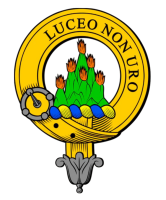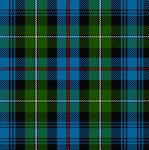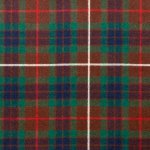© ericdentinger.com
2008-2025
SCOTTISH CLANS and SYMBOLS
Eric Maclewis - BAGPIPE SOUNDS
Eric Maclewis
Luceo Non Uro
I Shine Not Burn
The Mackenzie clan appears over time as an almost unwavering support for the Scottish royal power.
Geographically, the territories occupied by the clan have of course varied greatly: first centred on the Kintail region, they spread to the lands of Ross and Cromarty, then in the 17th century to Lewis Island when the Mackenzies supplanted the Macleod of Lewis for a time. It was also at this time that Mackenzie clan's chief became Earl of Seaforth.
The question of the common ancestor is lost in the mists of time and follows many tracks:
- sometimes an obscure "Gilleoin of the Aird",
- or the Norman Colin Fitzgerald (13th century),
- or Alexander (the Upright) Mackenzie of Kintail (15th century) who appears to be the most easily "traceable" ancestor.
The most famous castles attached to the clan are:
- first of all, Castle Leod which is its official seat: it was received as a reward after the Battle of Flodden (16th century).
- then the castle of Eilean Donan (the island of the monk Donan) located near the Kintail massif and the island of Skye and having belonged to the Mackenzies from the 13th century as a gift of King Alexander III.
Although many tartans currently coexist, one of the most representative is a tartan of military origin, that of the Seaforth Highlanders, a regiment created in the 18th century. The clan can also highlight another so-called "modern" tartan: see below.
The Crest represents a mountain in flames: you can see the Kintail massif, considered as the rallying point of the clan but also a legacy of the Macleod of Lewis (see page 1) with the different fireplaces lit on the mountain that symbolise the beacons supposed to warn of the presence of enemies.
The Motto "LUCEO NON URO", I shine but do not burn.
There is also an alternative motto with the Gaelic Cuidich 'N Rìgh (Help the King), obviously representative of the Mackenzie's constant support for Scottish royalty.
We also find this motto on the other crest clan in force, which is that of the Seaforth Highlanders and which represents a deer's head.
Finally, the Mackenzie slogan or war cry: "Tulach Àrd", literally "High Hillock"; it probably refers to the Kintail massif, the clan's rallying point.
MACKENZIE
FRASER
All My Hope is in God (Frasers of Philorth)
Je Suis Prest (Frasers of Lovat)
The Frasers are divided into two families, depending on whether they belong to the Highlands branch or the Lowlands one.
The name Fraser could come from France and be related to the word strawberry, hence the red dominants that will be found on several tartans as well as the figurations of strawberry trees on certain symbols.
Reality or historical tradition romanticised by Walter Scott in particular, the Frasers are said to be descended from an Anjou family, from the Frézelière estate...
In any case, the name appears in Scotland in the second half of the 11th century or at the latest around 1160, according to the sources.
Simon Fraser would therefore be a possible descendant of an Angevin René Frezel.
This Simon was owner in Keith, a former parish in East Lothian, near Edinburgh.
Initially based in the Lowlands, the Fraser family then migrated to the Highlands, north of Loch Ness and the Inverness region.
A descendant of the original Simon Fraser, Sir Simon Fraser The Patriot, was a war companion of the famous William Wallace.
He distinguished himself in particular at the Battle of Roslin in 1303 when the Scottish in numerical inferiority won a resounding victory over the English army.
From the 14th century, two main branches therefore appeared.
They can be similar to two distinct clans but with a common origin:
- in Aberdeen County, the Frasers of Philorth (or Lairds Saltoun), a family of the Lowlands; they founded the city of Fraserburgh in the 17th century.
- in the area of Inverness and more precisely Beauly, the Frasers of the Highlands or Frasers of Lovat, with their leaders known as MacShimi(dh) or "son of Simon".
The Saltoun lineage of the Lowlands Frasers is recognised as the leader of all Frasers... while the Lovat are leaders of the traditional Fraser of Lovat clan.
In addition to the hero Jamie Fraser, we also find the 11th Lord Lovat, nicknamed "The Old Fox", in the Outlander series. He was executed in 1747 after the defeat of Culloden, for his final support of the Jacobite rebellion.
Another Simon Fraser, the 17th Lord Lovat, 24th MacShimi, marked a famous episode during the Second World War by ordering his piper, the famous Bill Millin, to lead the troops into battle, especially at the time of the Pegasus Bridge episode.
There is a multiplicity of tartans available, all representative of part of the history of the clan and the families that compose it.
We can still draw inspiration from the distribution into two branches with the main tartans of the Lovat and those put forward by the Frasers of Philorth (see two tartan models below).
The crest:
-a deer's head for the Lovat,
- a strawberry for the Philorth.
The Mottoes:
- "Je Suis Prest" (I Am Ready) for the Lovat,
- "All my Hope is in God" for the Lowlands branch but also for the entire Fraser family, of a common origin!
NB: the tartans represented here have been arbitrarily chosen from the many versions available and are only possible versions.
















